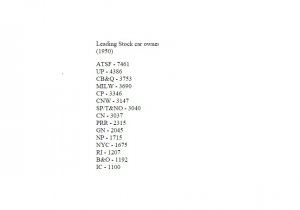GDSmith
Member
When I go to search for a "cattle car", what should I be searching for in terms of model railroad car types? I tried a generic "HO Scale cattle car" but didn't find anything of use. Obviously if I go to a train show (next one for me is Mid-April in Hickory, NC) I will "know it when I see it" but I'm not sure what to search for. (Length, description, wheel type?) I don't care about road-name.
Thanks
(edit - pictures are from Model Railroader magazine)
Example of what I want:

Close-up of the car:

Thanks
(edit - pictures are from Model Railroader magazine)
Example of what I want:
Close-up of the car:


